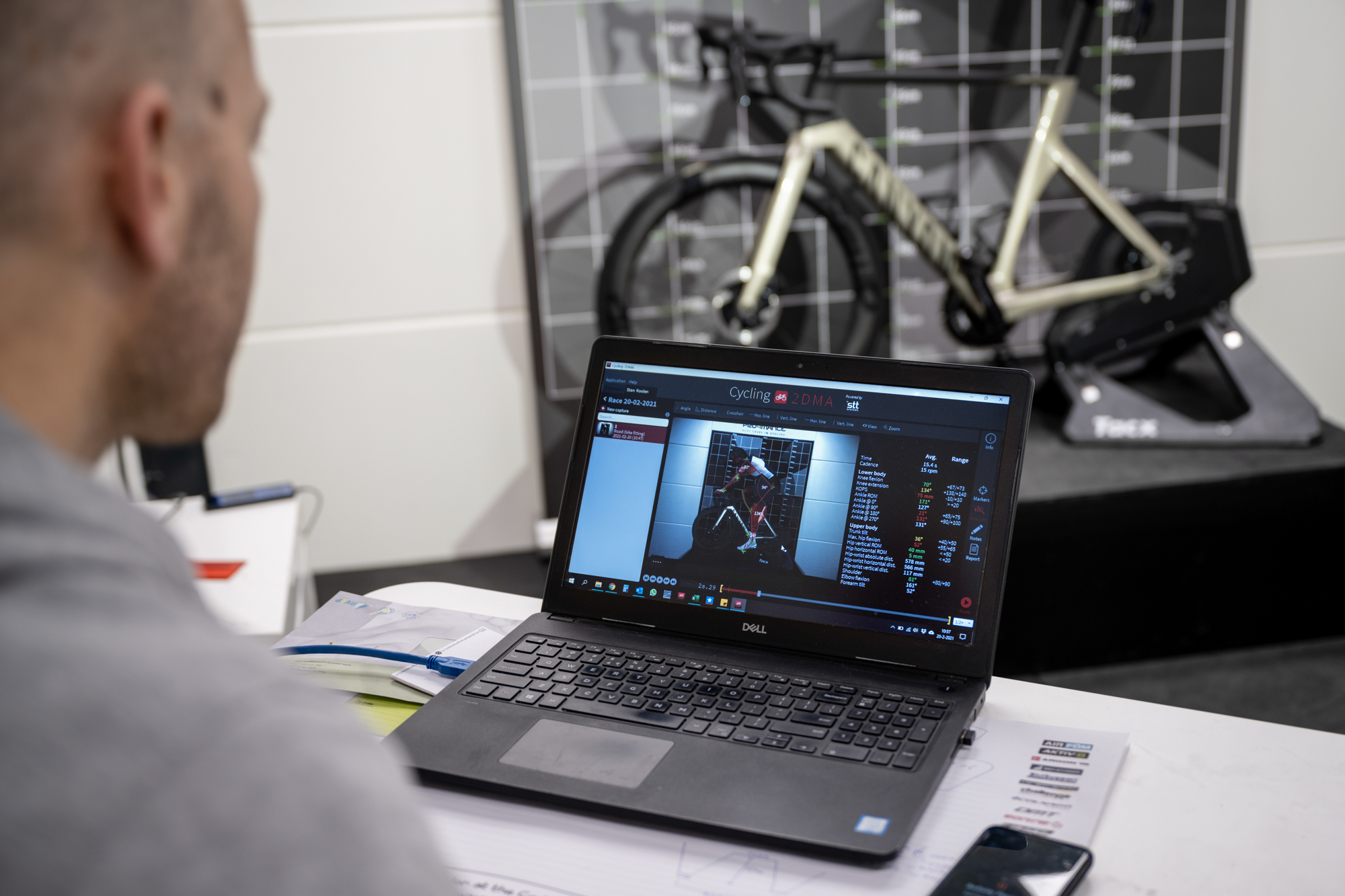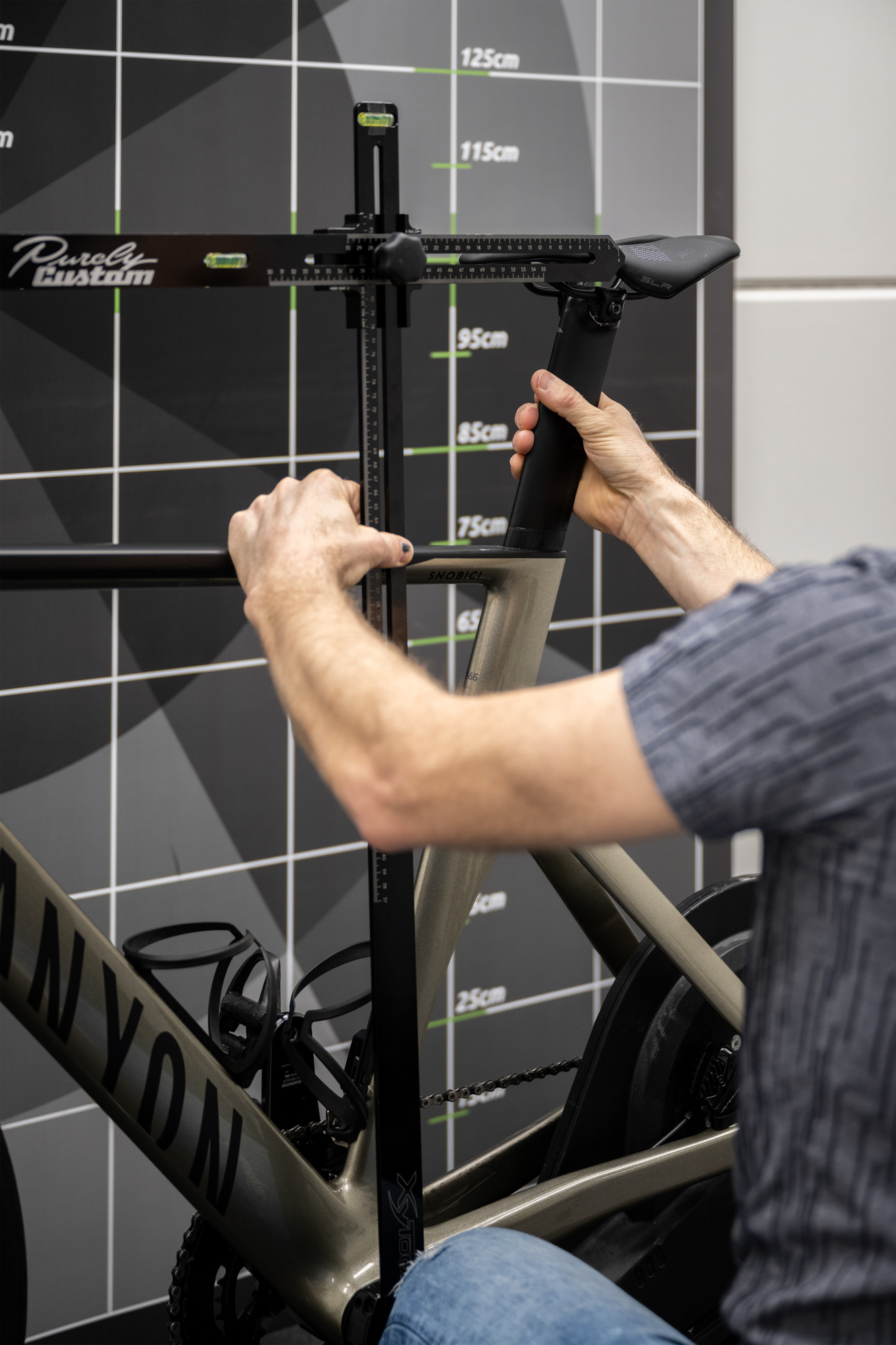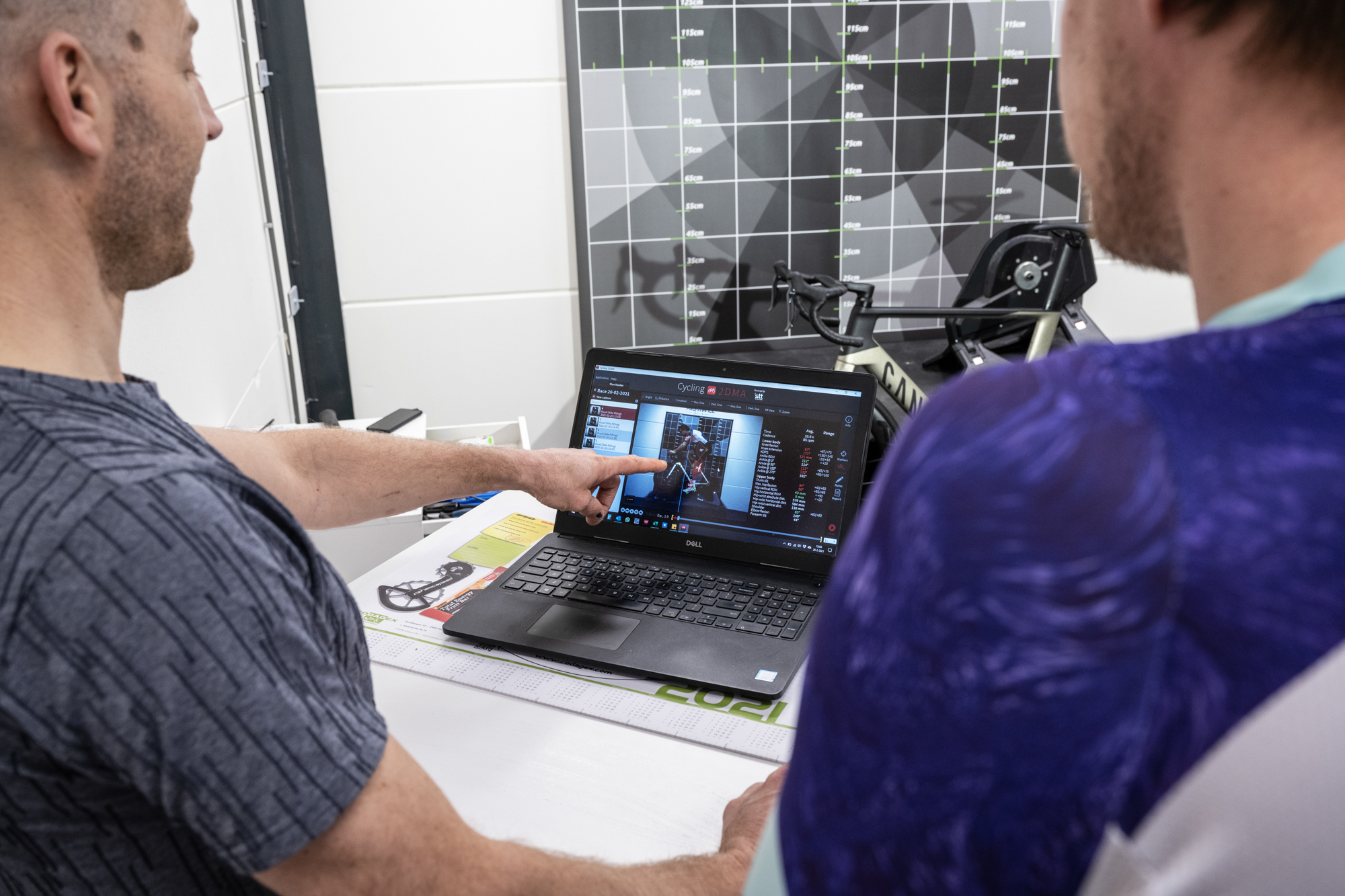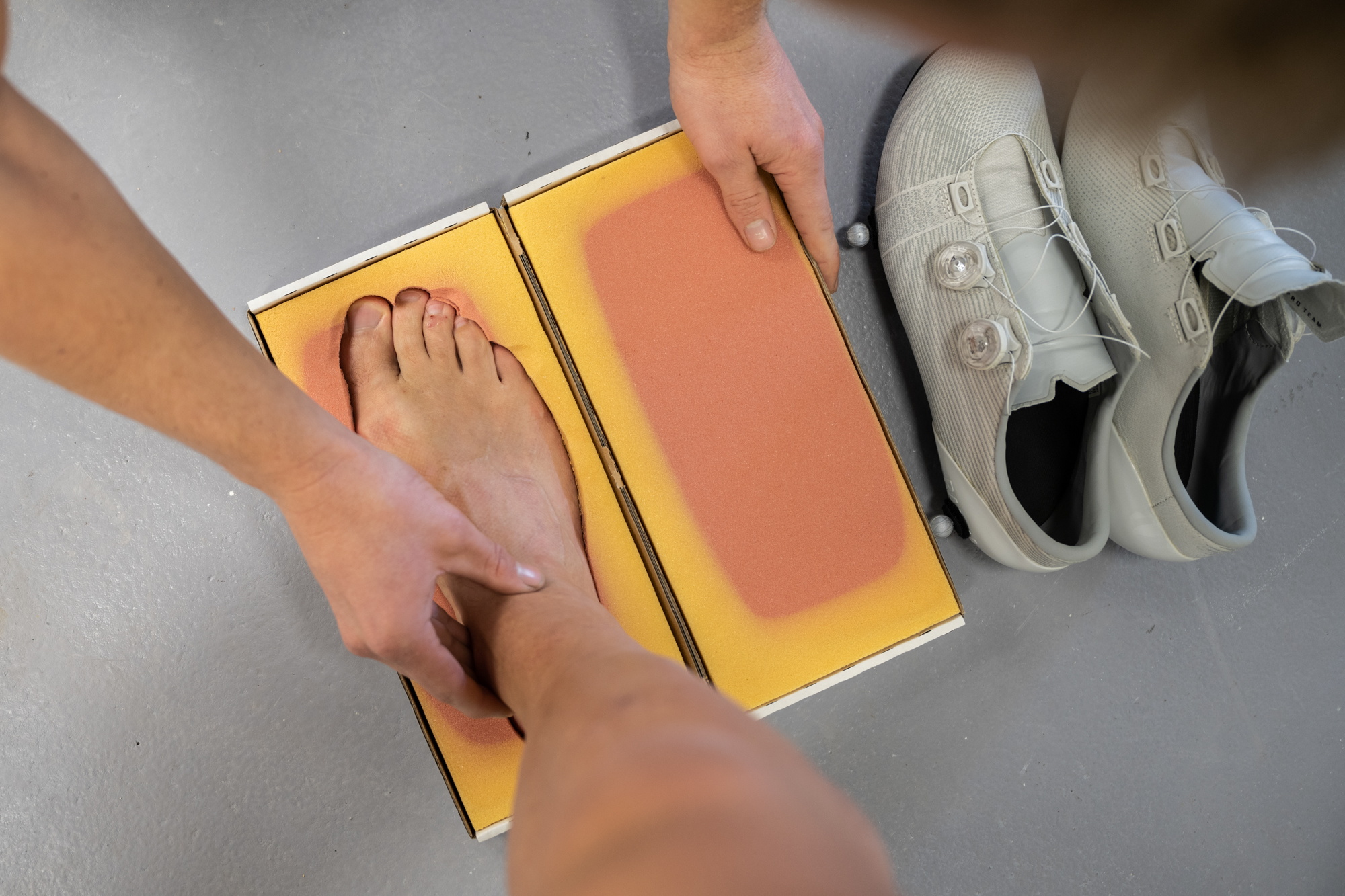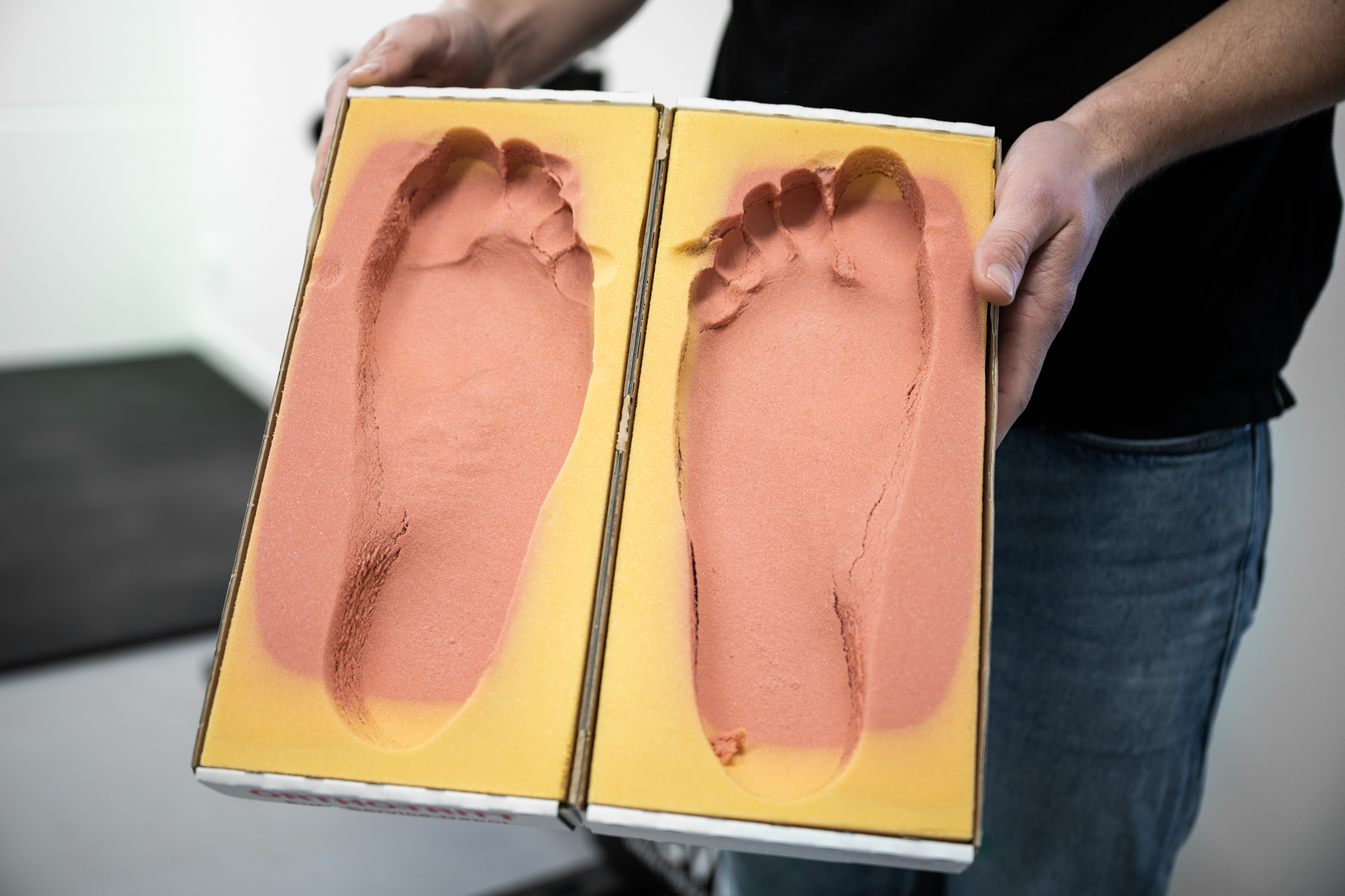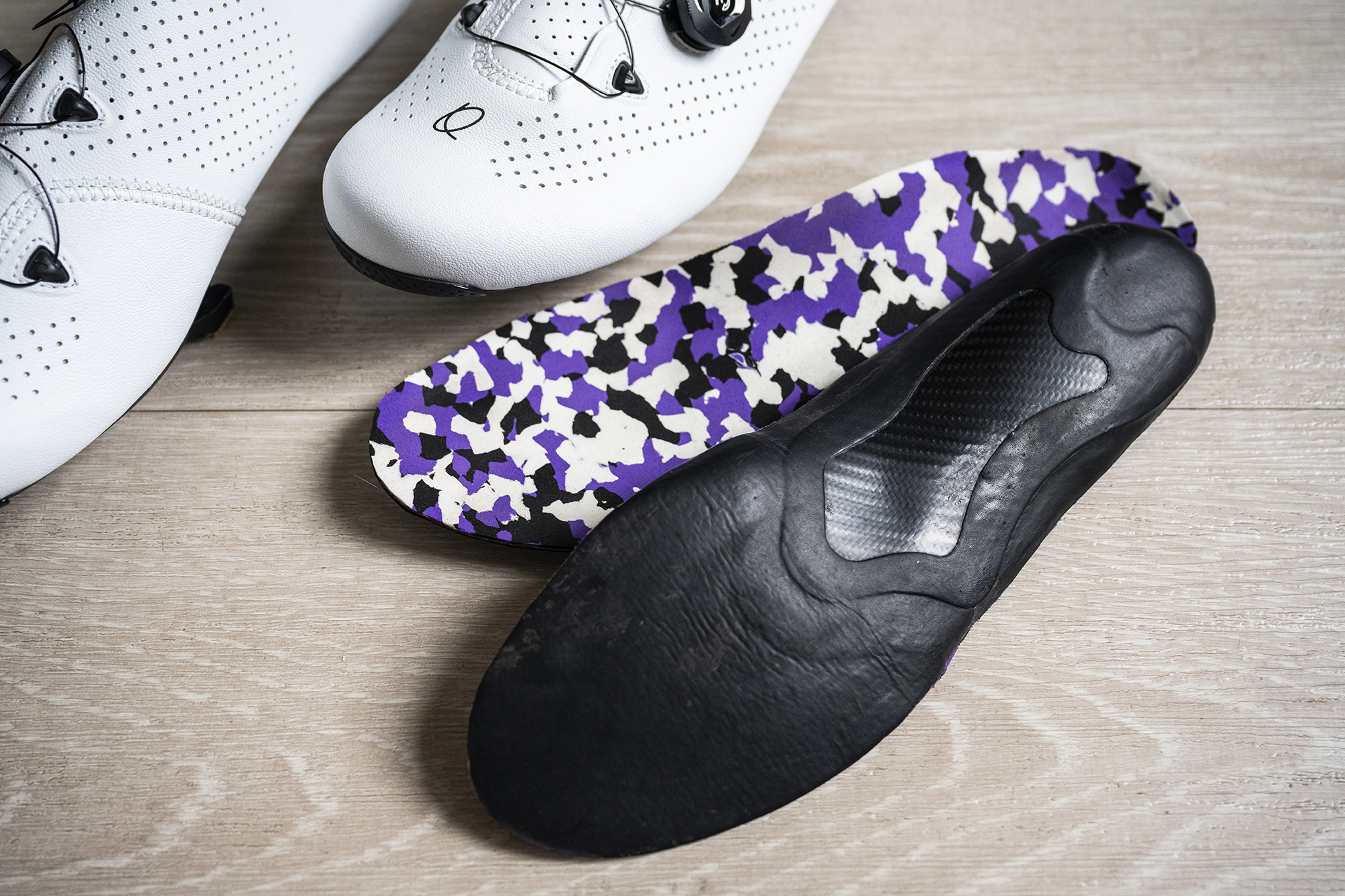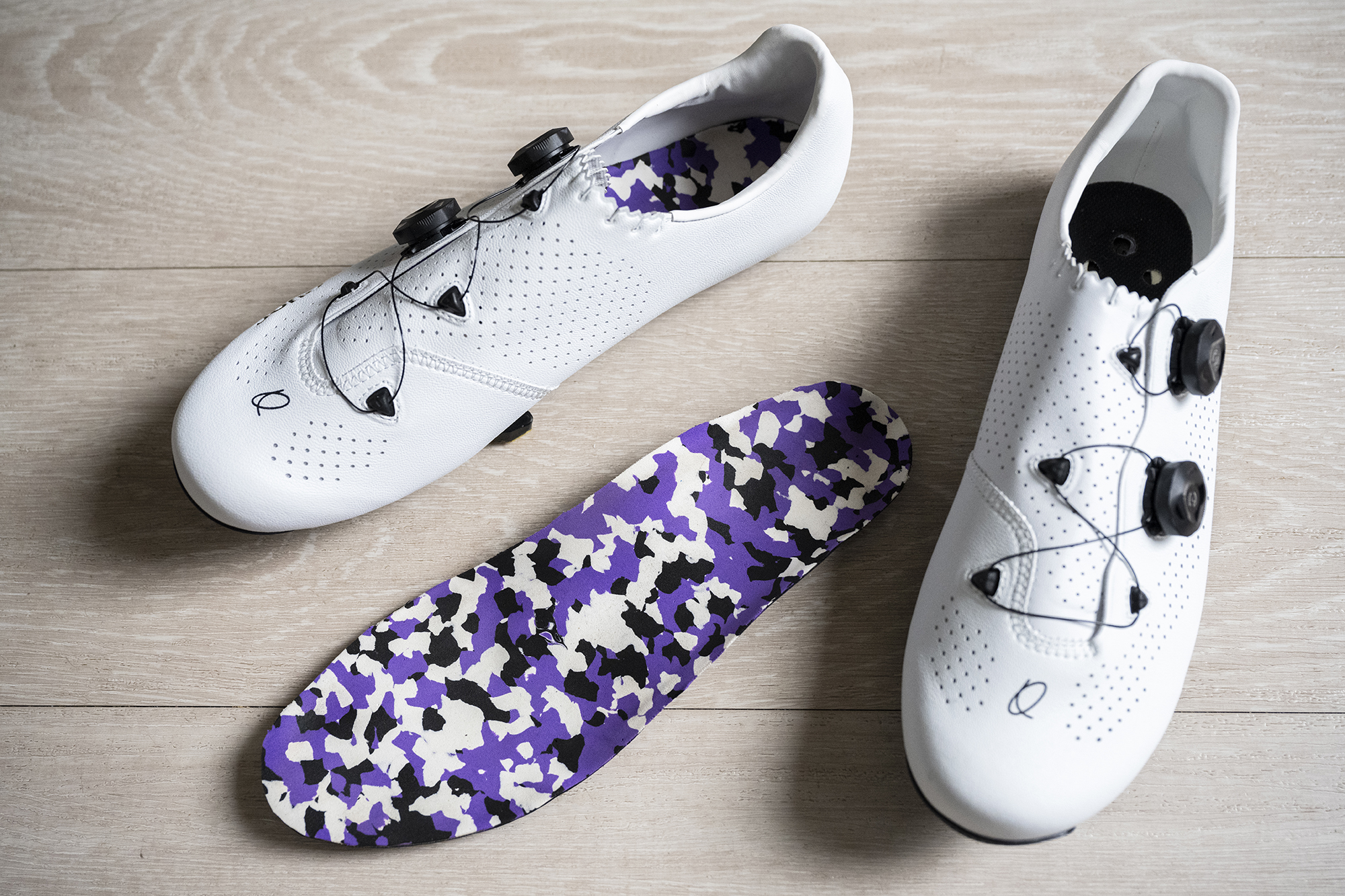







Bike fit, why it matters!
2021 photos by Stan Koolen
First of all, what is a bike fit? The word says it all: a bike fit is determining your optimal fit on the bike. Whether you are buying a new bike, switching between bikes, not feeling comfortable on the bike, or simply installing a new saddle, bike fit is important. It’s not just about setting your seat height.
2021 photos by Stan Koolen
First of all, what is a bike fit? The word says it all: a bike fit is determining your optimal fit on the bike. Whether you are buying a new bike, switching between bikes, not feeling comfortable on the bike, or simply installing a new saddle, bike fit is important. It’s not just about setting your seat height.
During a bike fit you will be measured from head to toe including both a bike position analysis and a physical examination. For example, the arch of your foot, your flexibility, the pressure distribution of your buttocks, the position of your feet, and any difference in leg length are examined. Having your bicycle correctly set up for you will keep you injury-free, comfortable, and make you stronger and faster. A good fit can also help prevent overuse injuries that result from an improper position. The correct position will vary from person to person, depending on factors like age, style of riding, physical attributes like flexibility, and medical history.
A good bike fit will take many things into account, and the interplay of these will have a big impact on your position on the bike: Flexibility, goals, and injuries.
Your flexibility is a key element informing the position you can hold on the bike, for roadies, how aerodynamic you can make yourself. The way your bike is fitted to you can alter depending on your goals and your type of riding. A criterium racer will be fitted differently than someone who rides long distances and grand fondo's. Lastly, any history of illnesses or imbalances in your body will play a large part in the way the bike is fitted to you.
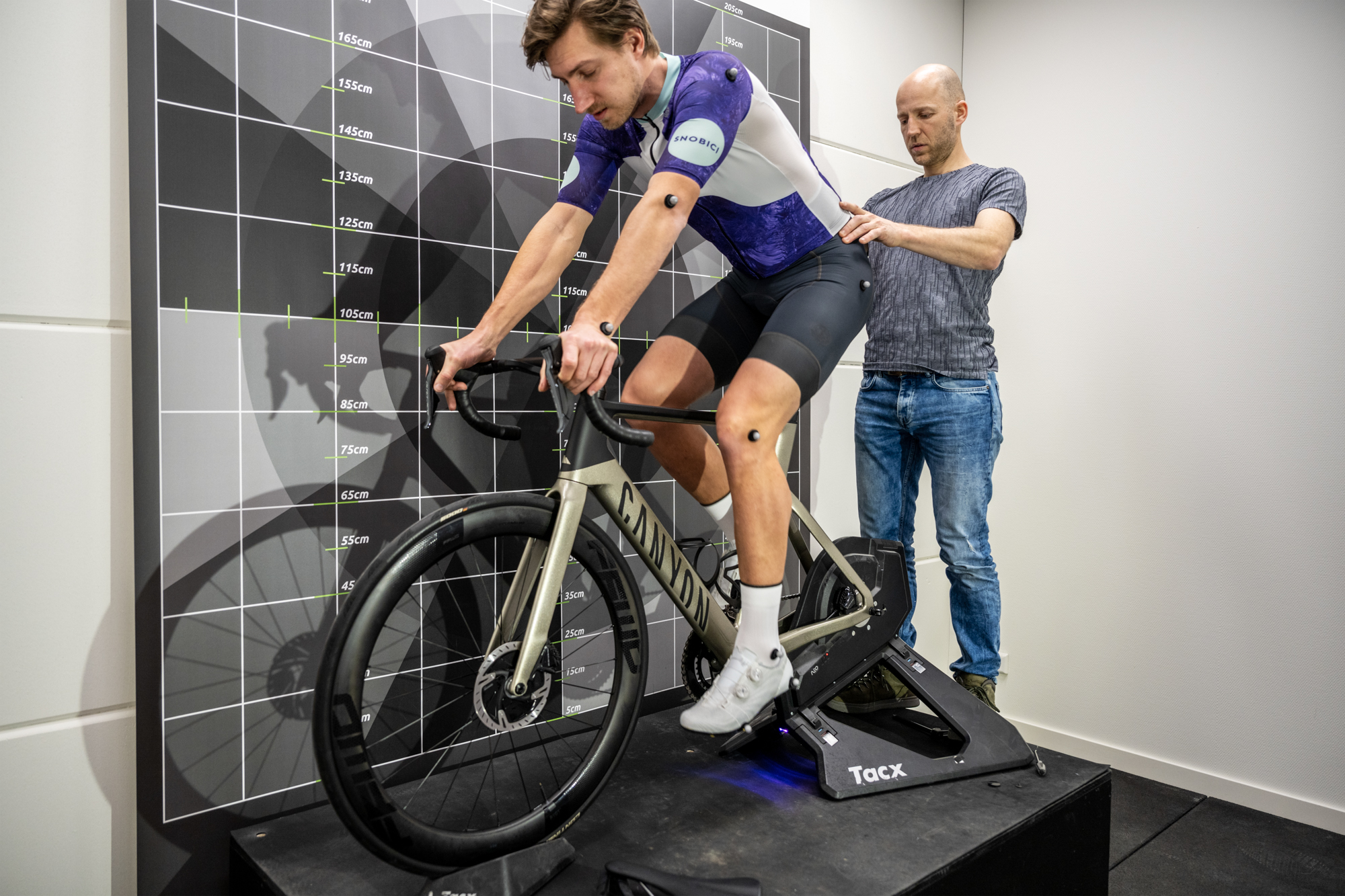
Speaking for myself, back in 2011 I was diagnosed with a bilateral hernia also know as a double hernia. Lower back pain has always been an issue during cycling especially when pushing hard on the pedals or while climbing. It made me feel uncomfortable on the bike. This and the pain on the outside of my right foot while riding made me decide to get in contact with Eric from Pro4mance and Yannick from Profysic. They both work together under the same roof, Eric is doing the bike fitting and Yannick is responsible for the custom carbon orthopedic insoles.
As part of the full cycling concept, Pro4mance has developed a clear 10-step plan. From the intake to the follow-up, they take the time to determine the optimal fit on the bike.
Intake
First, Eric starts with an intake. During the intake, we discuss my goals, complaints and my feeling on the bike. Eric then asks me a couple of questions; When did the complaint arise, what is the course of the complaint and/or injury and when does the complaint manifest itself? With answers to these questions, we lay the foundation for a targeted physical examination. We then discuss my goals and wishes to not only eliminate my complaints but also to optimally adjust my bike to the performance I want to deliver.
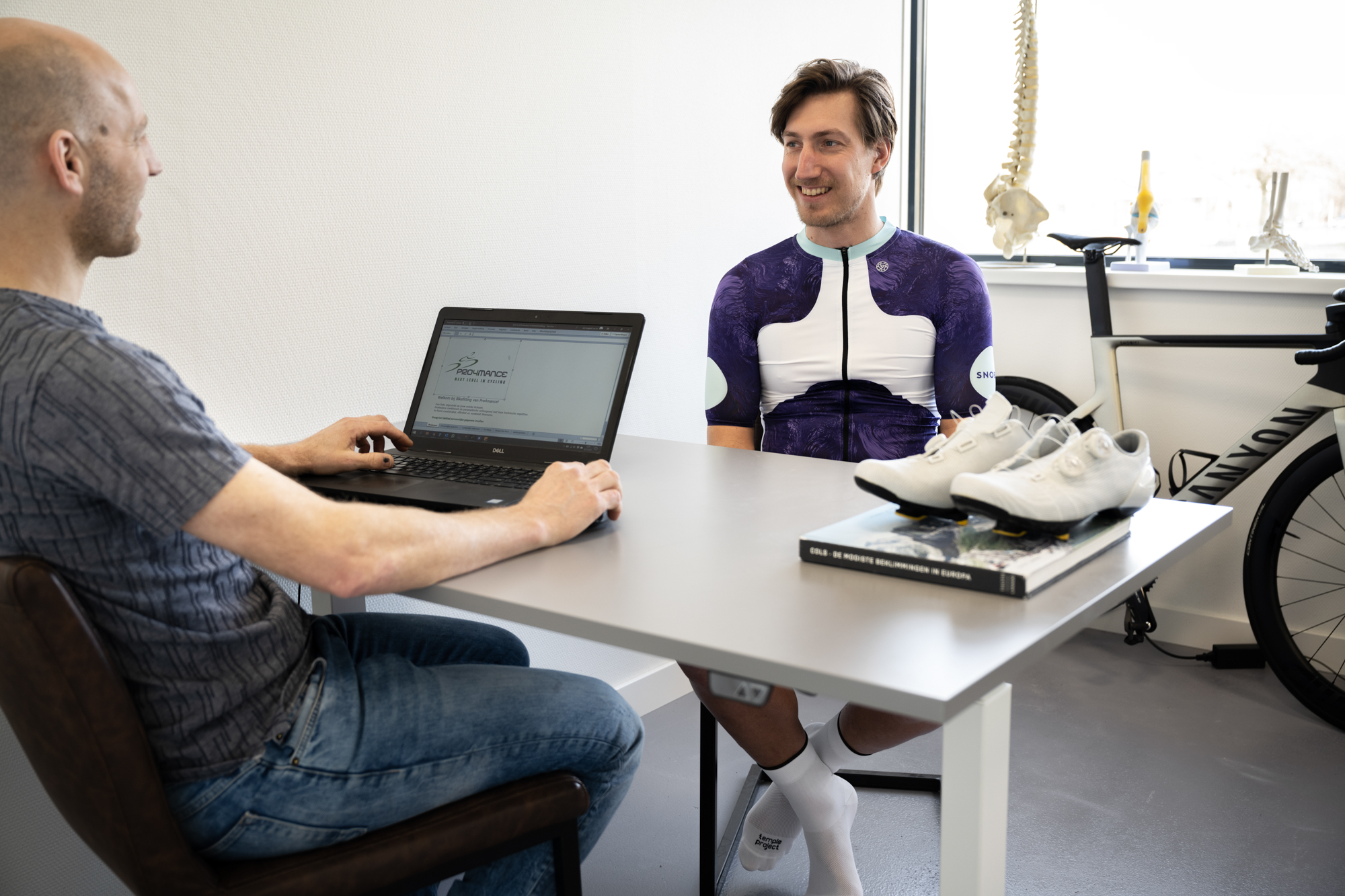
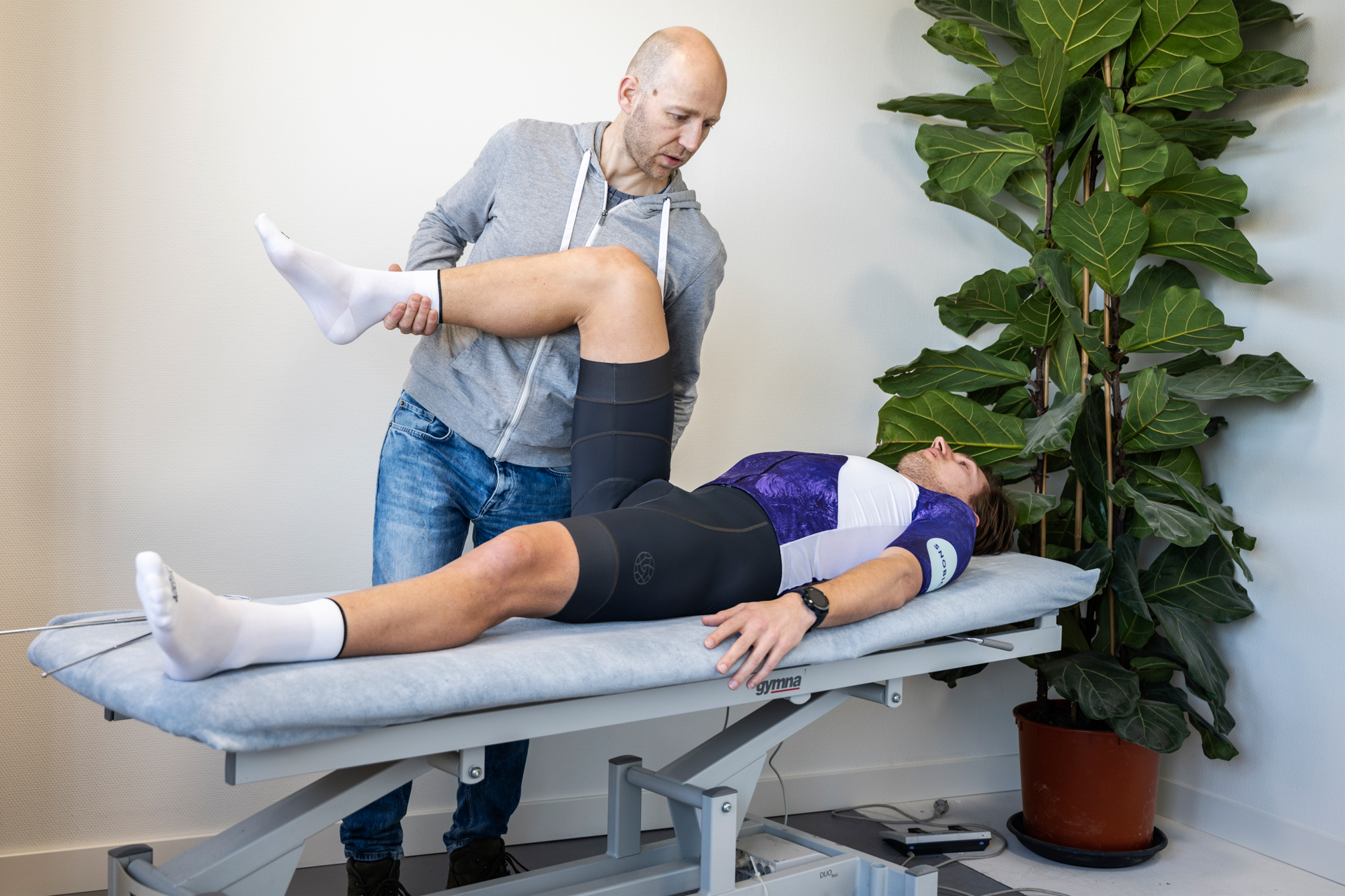
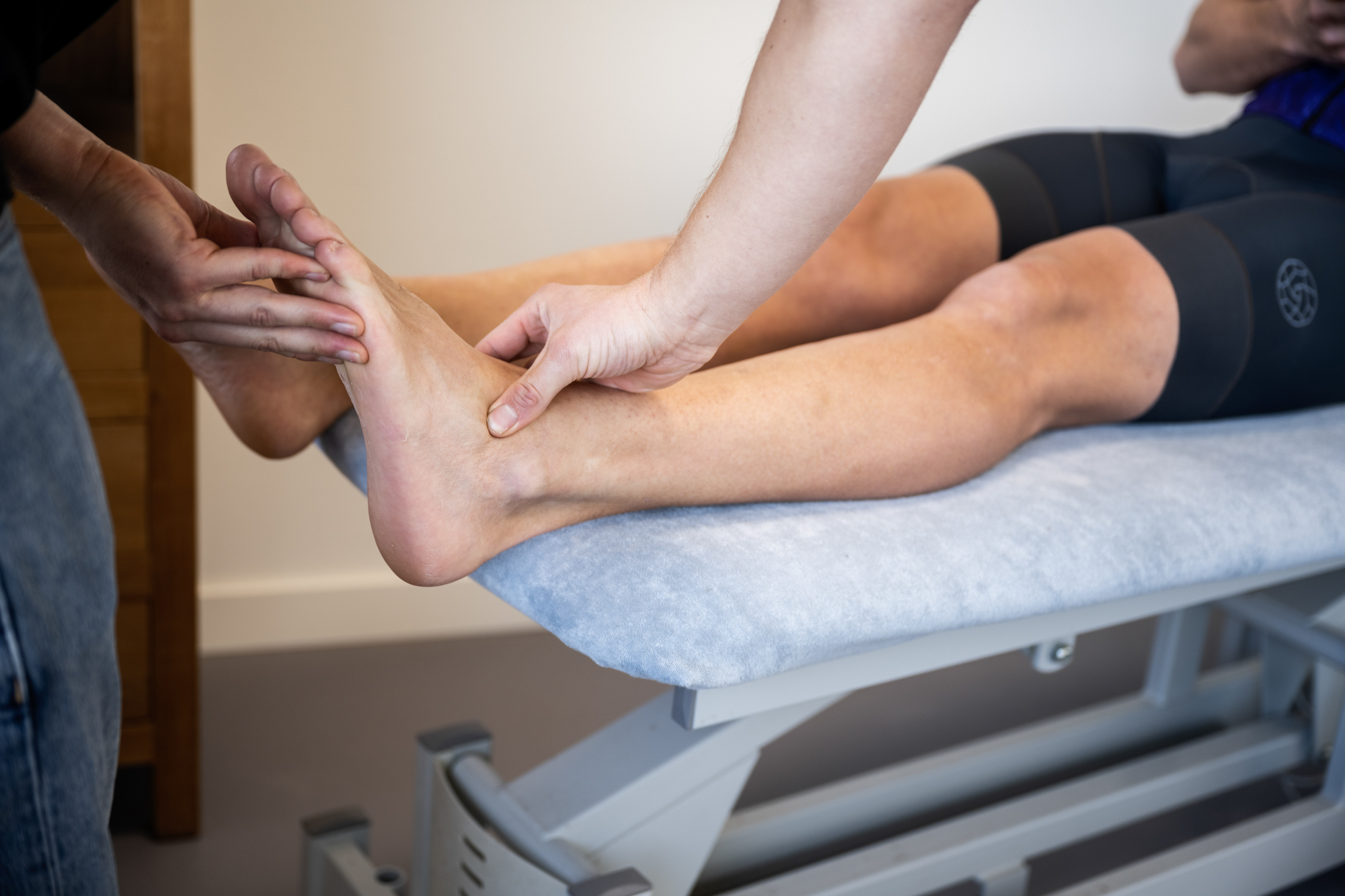
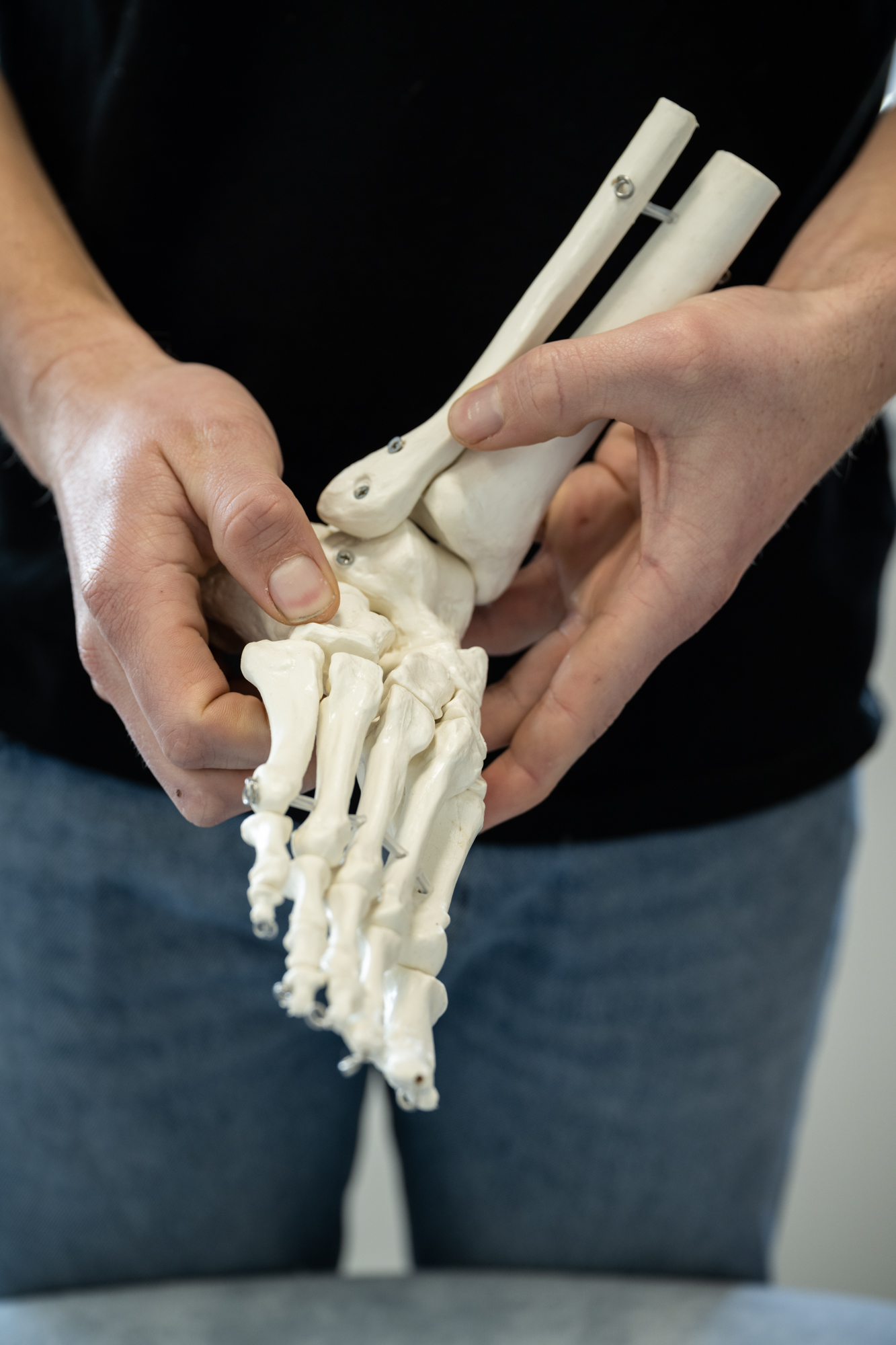
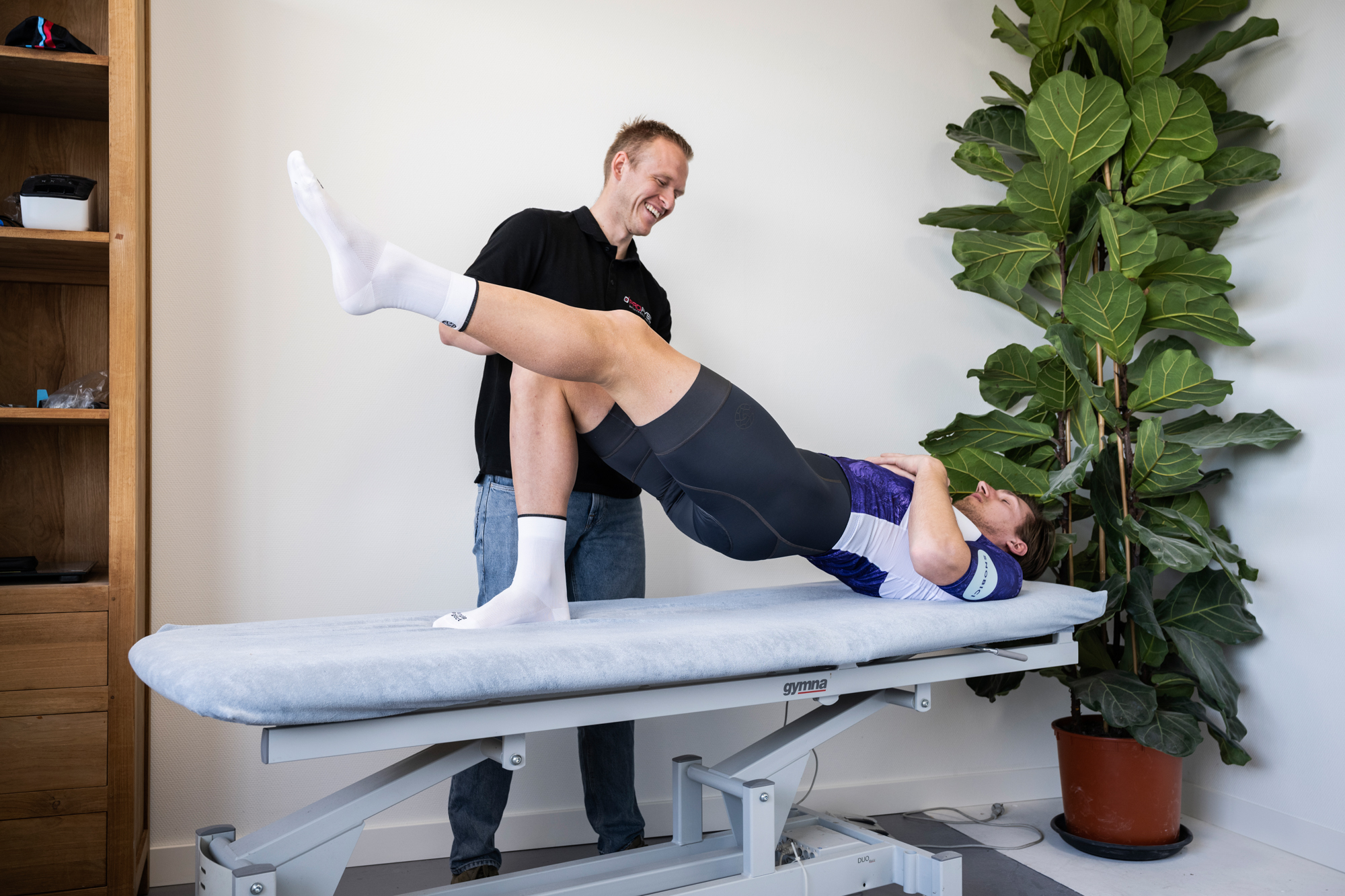

Physical Examination and cleat adjusment
After the intake, we continue with the physical examination. This is a complete examination in which they will look at, among other things, the flexibility and mobility of my back, pelvis, and legs. Combined with the information from the intake, Erik and Yannick will look for the source of my complaints or injuries. It quickly shows that my muscle strength, mobility, and flexibility differ between my right and left leg. A couple of side effects from the Hernia back in 2011. As well as likely stresses in one of my ankle joints, something I wasn't aware of but got fixed while I was there.
We then go over to the cleats, as I thought the pain in my right foot was caused to incorrectly adjusted cleats, nothing could be further from the truth. These were pretty much assembled correctly. Keep in mind that poorly adjusted cleats can have a major impact on your entire riding position. Imbalance or simply incorrect assembly can cause annoying complaints and injuries in the long term.
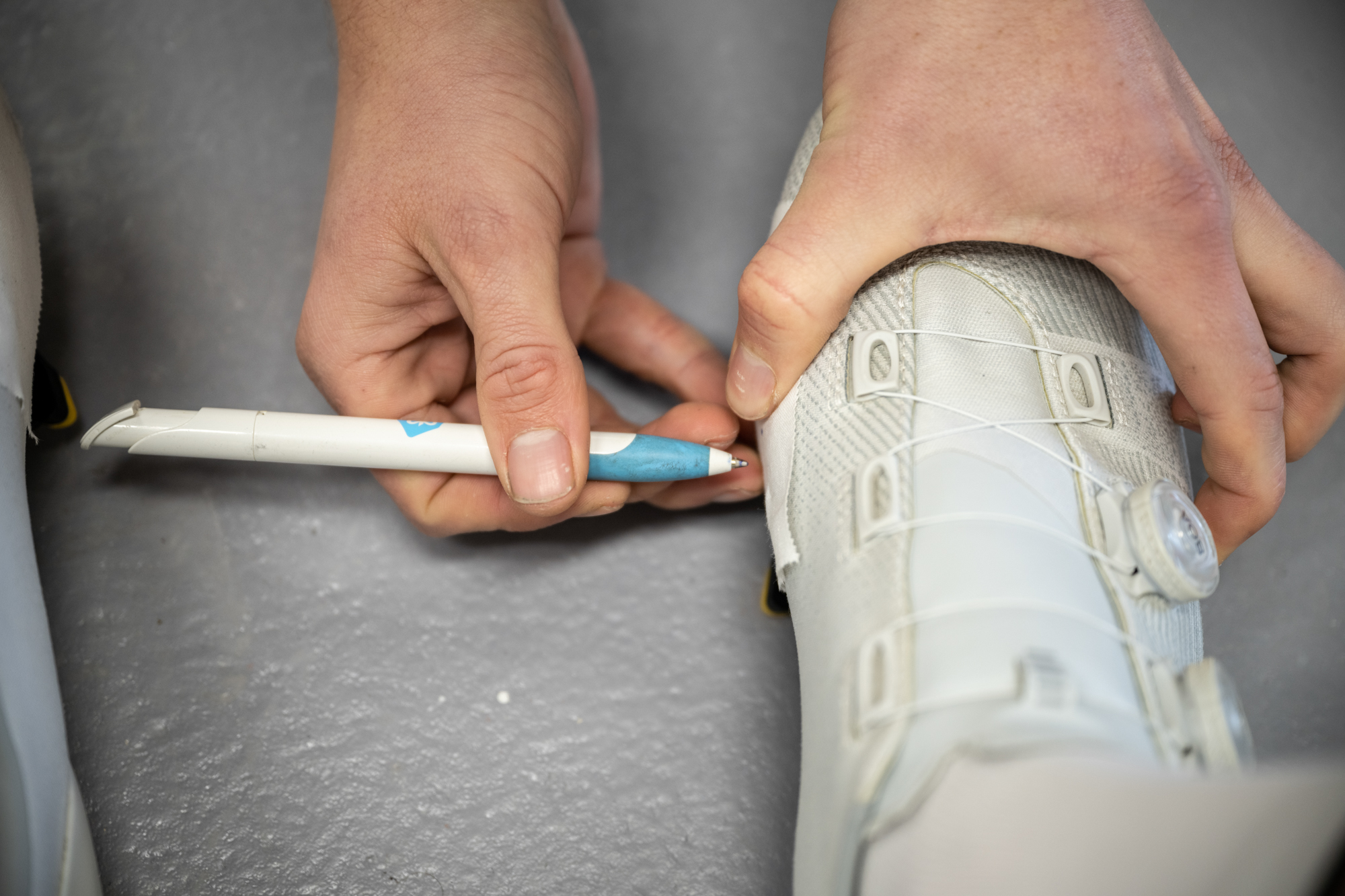
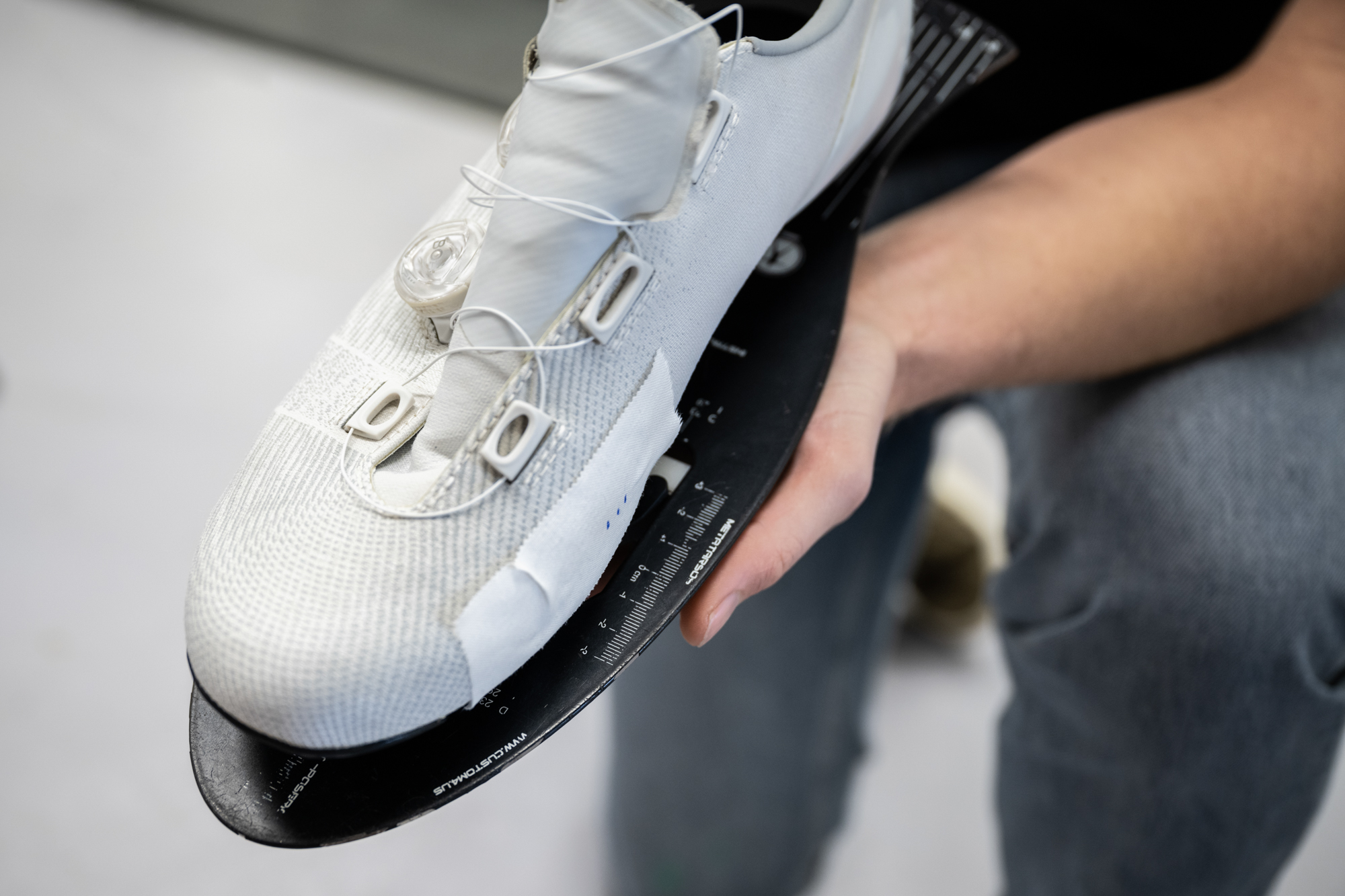
Analysing and adjusting postion
Eric takes my bike and installs it on a smart trainer. He then lets me pedal for about five to 10 minutes to observe my movement head-on, looking for any irregularities in my pedal stroke and observing how I naturally position myself on the bike. As you look at the photo, you can clearly see my pelvis is twisted. Something to have a physiotherapist or chiropractor to look at. During the rough adjustment, my position on the bike is largely determined. With the information from the physical examination and the bicycle measurement, Eric will look for the ideal adjustment of my bike to reduce complaints. Within my physical capabilities, he puts my saddle at the right height and position, and the cockpit at the right height. He will try to approach the optimal position of the pelvis, my back, shoulders, and arms. Right away my saddle height is set almost 2cm higher than before. Eric also suggests getting a different cockpit, one that has a slightly longer stem. Sadly it isn't an option right now, so we'll have to work with what we've got. I probably would have been better off with a Canyon Aeroad in size XL instead of the L. Getting in contact with a bike fitter is a good thing to take into consideration before buying a new bike.
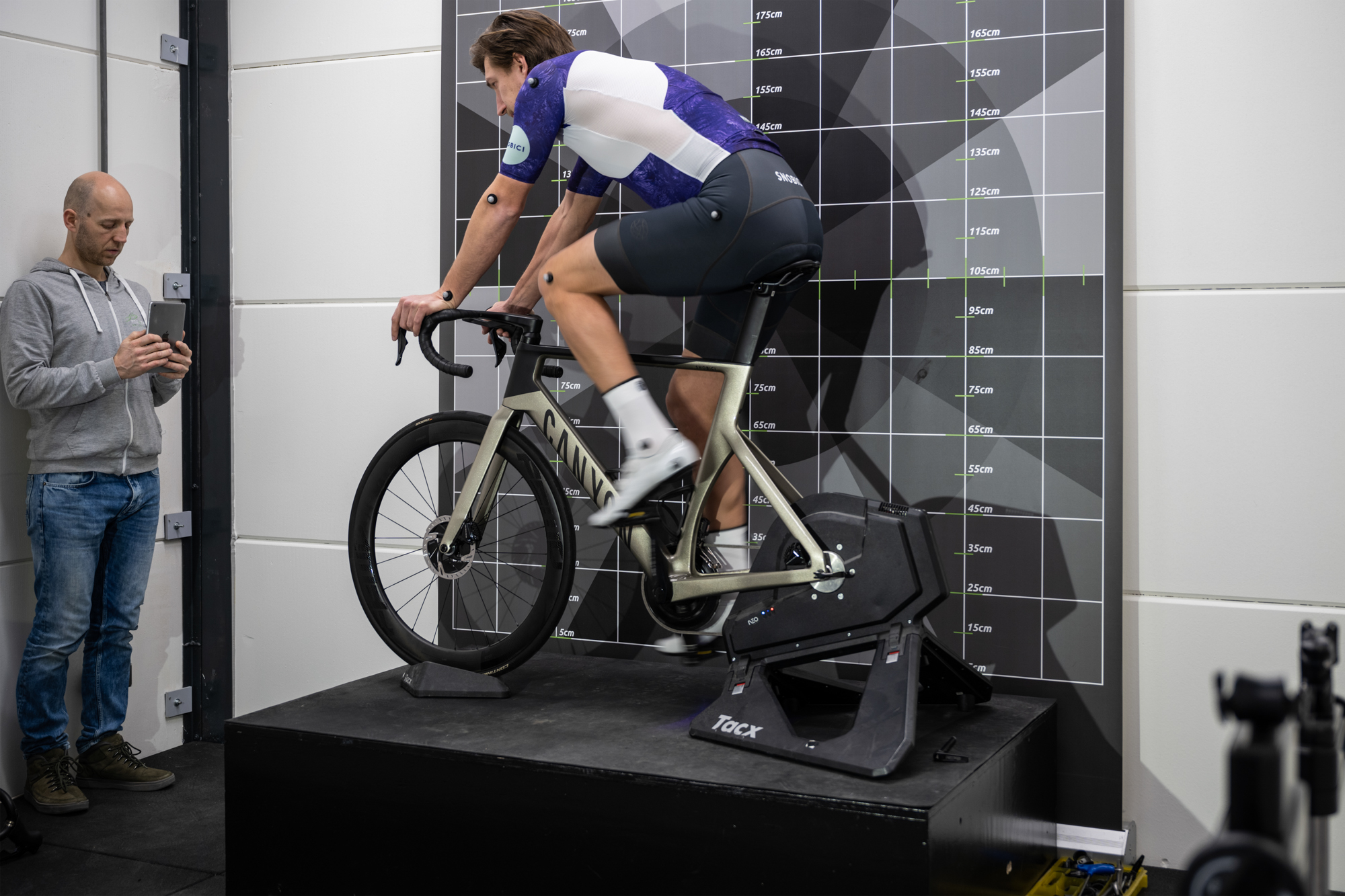
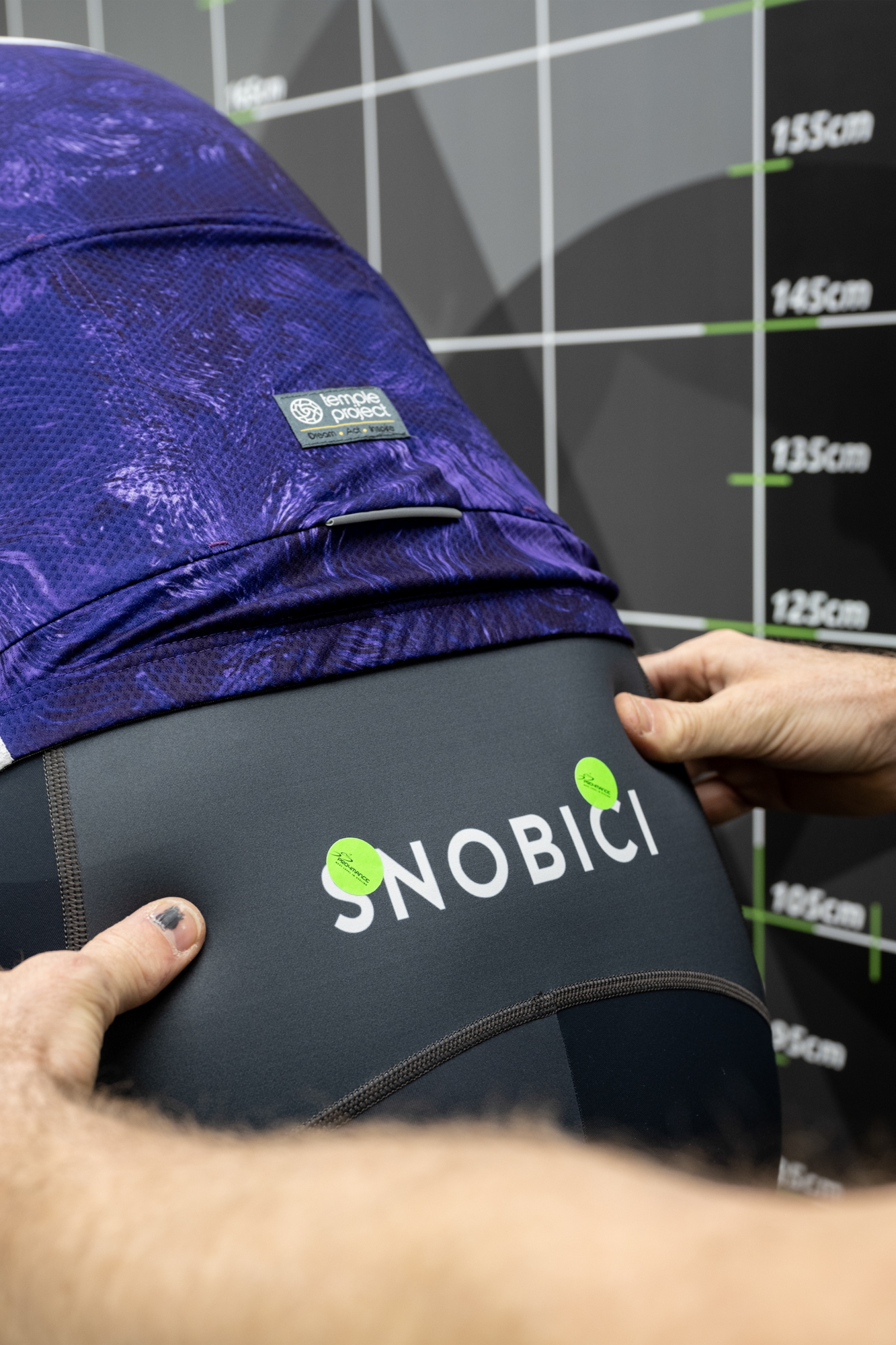
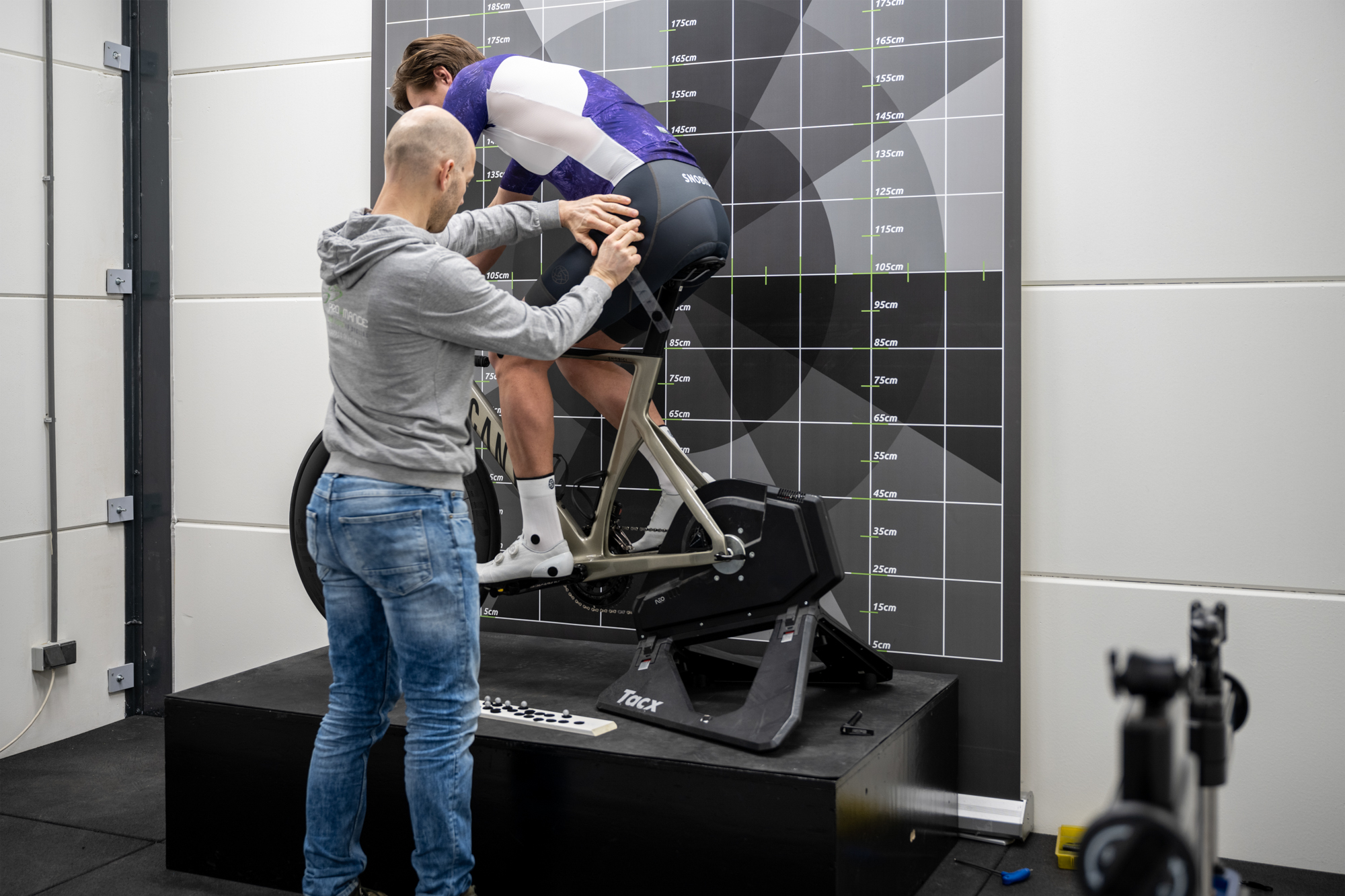
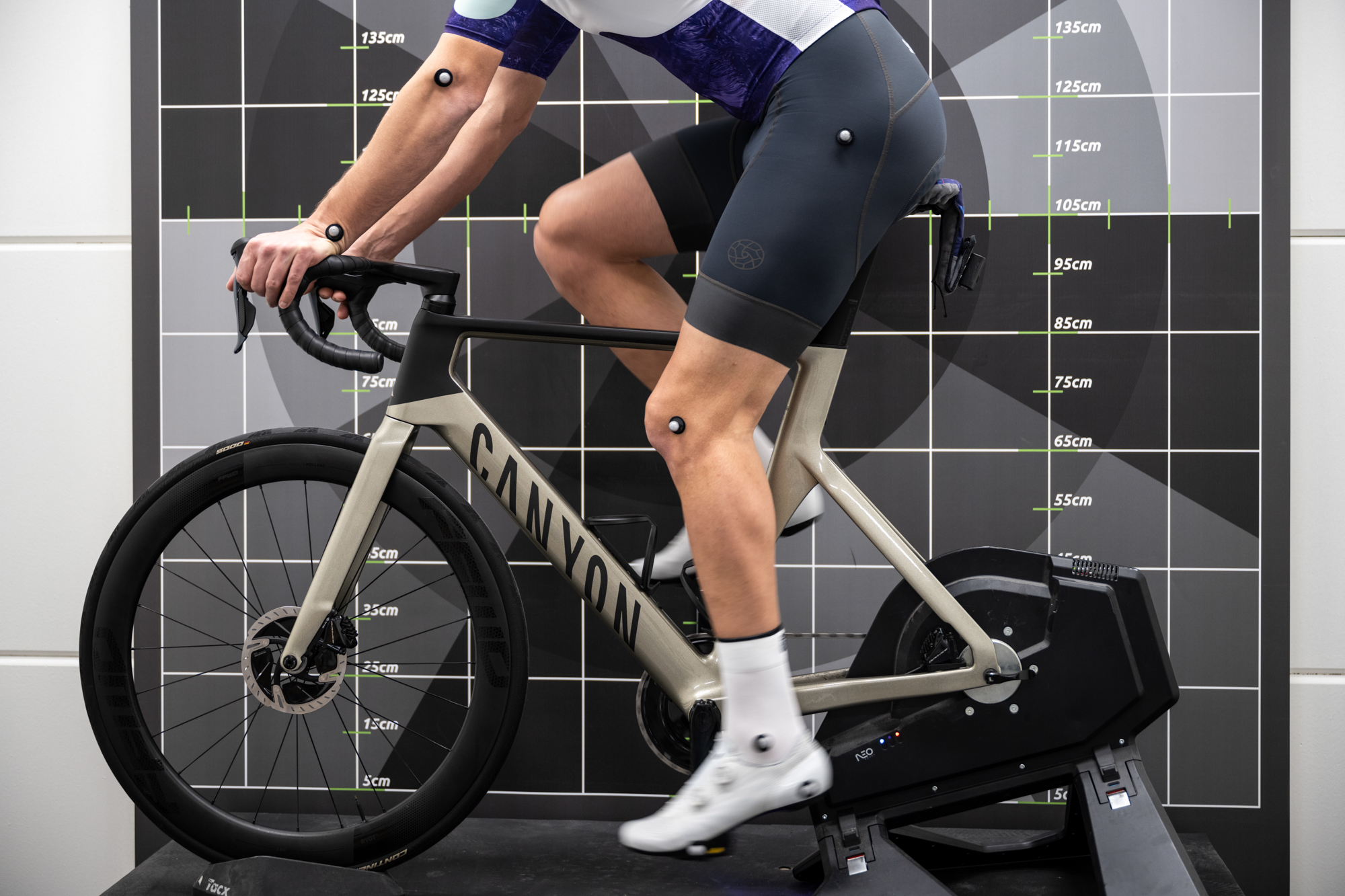
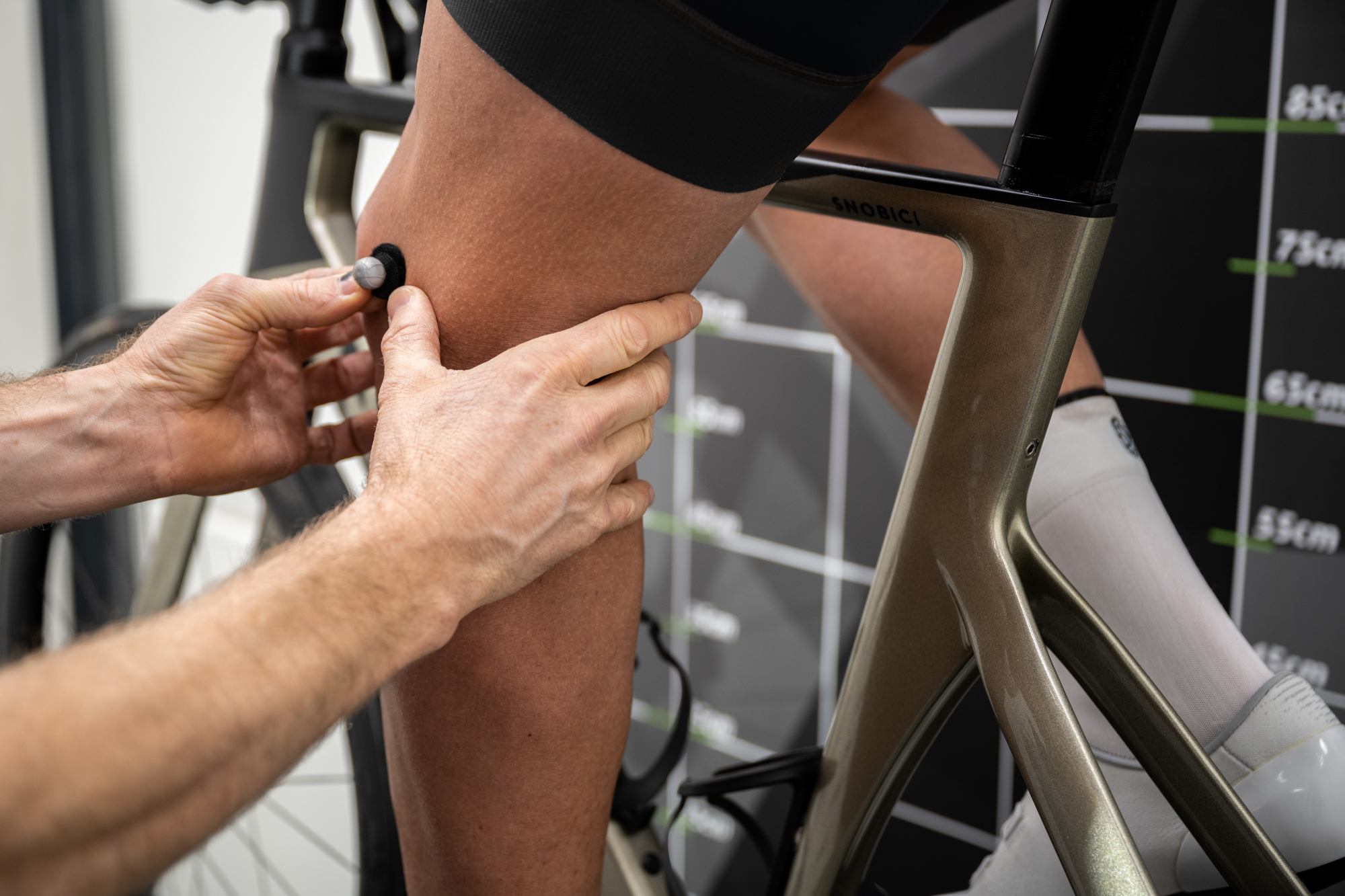
Saddle measurement
Without doing a saddle pressure measurement Eric's already suggesting getting a different saddle, apparently, I've only been using the tip of my saddle. When we're doing the saddle pressure measurement, a pressure mapping foil with sensors is placed on the saddle, it captures all the pressure points. The pressure distribution is displayed by color: blue represents low pressure, then the pressure rises from turquoise through green, yellow, orange to red. It shows that I have too much pressure in the center area and that my current saddle is too wide. I try a couple of different types of saddles and end up with a smaller-sized saddle with a pressure-relieving cut out in the middle. Test rides will have to show if this is the right saddle for me, spoiler alert: It is! After a couple of test rides, approx. 80-100km I already feel a huge difference in comfort and pressure relief in the center area. And I'm now using the entire saddle.
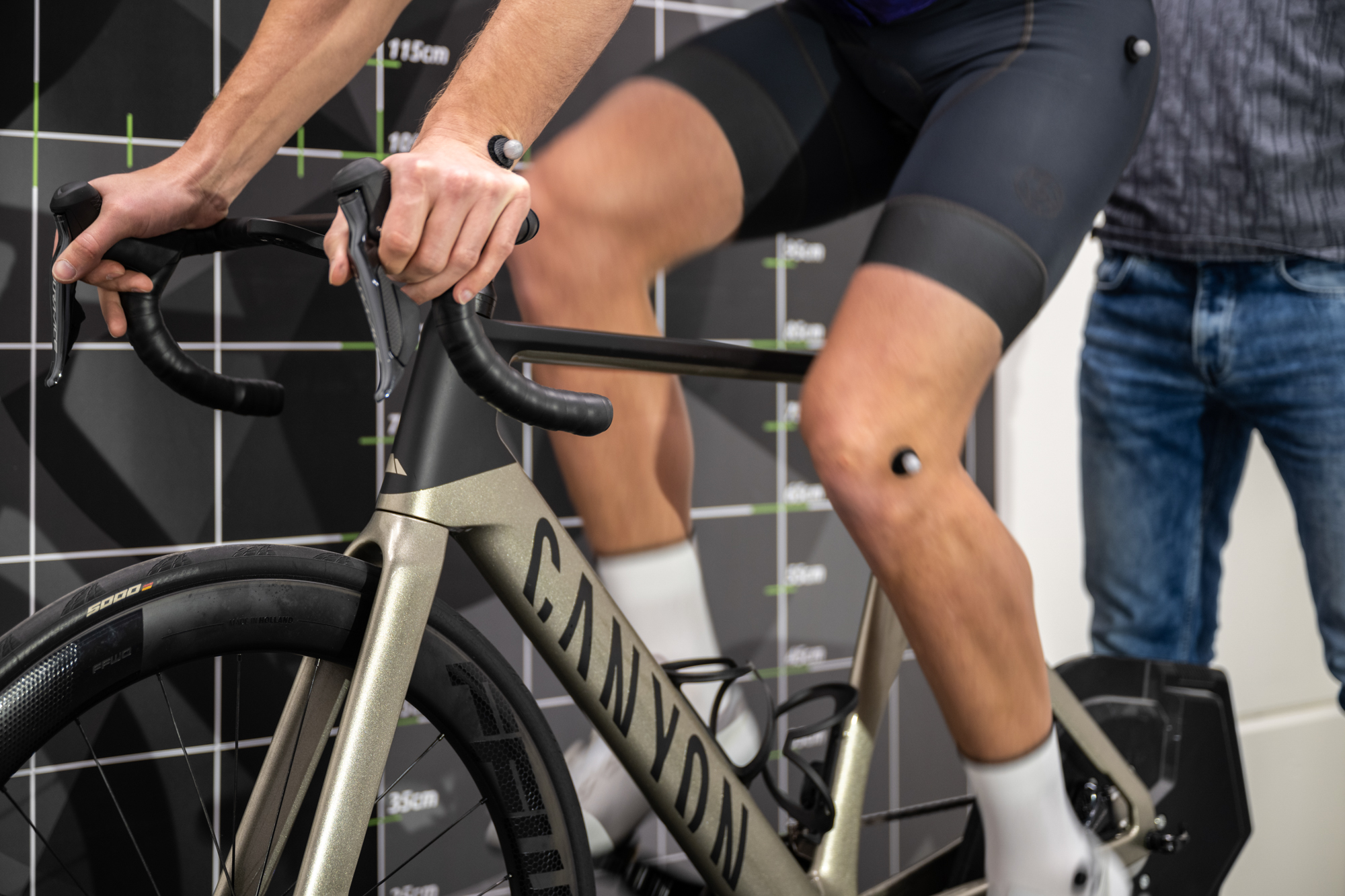
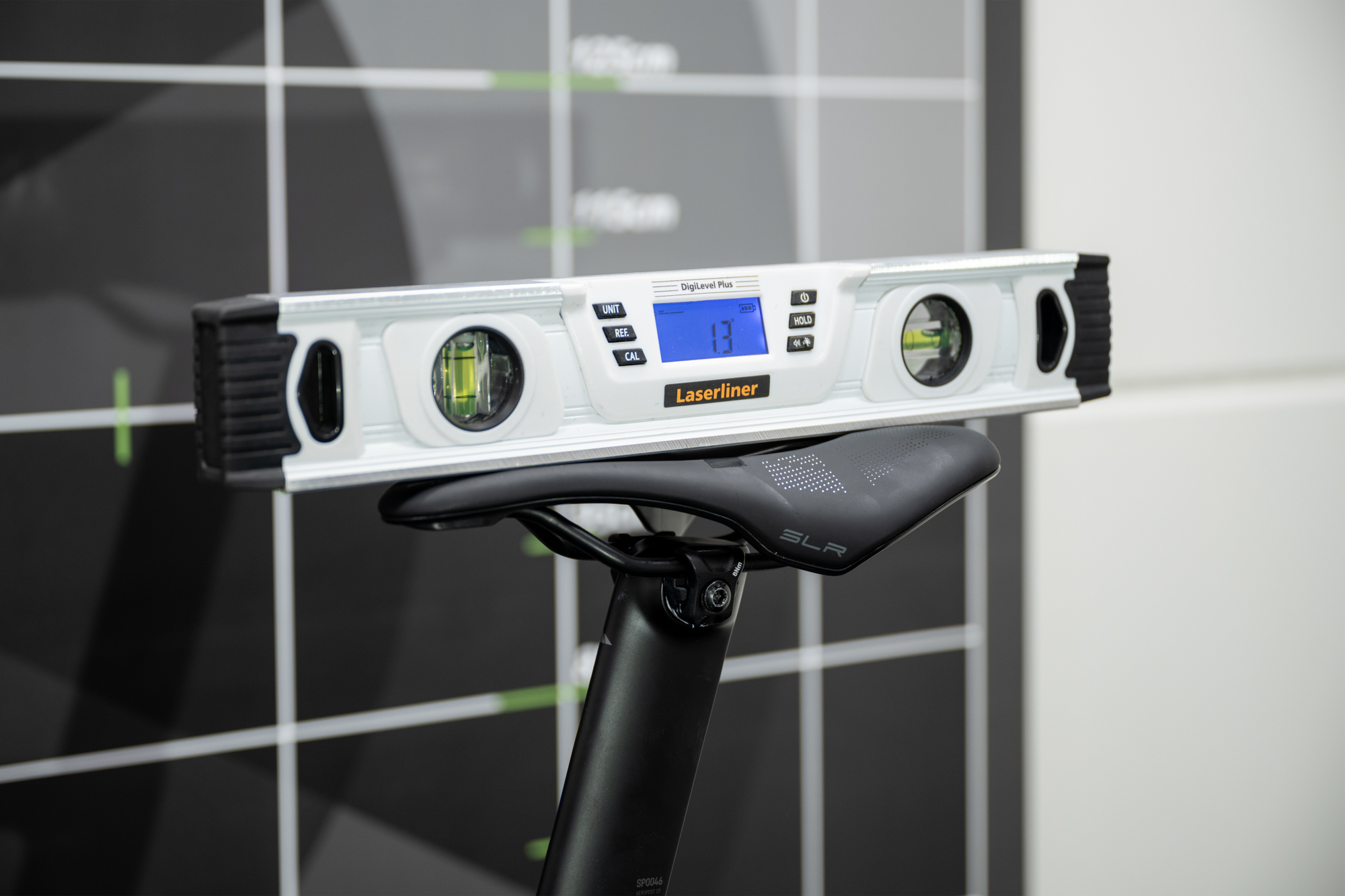
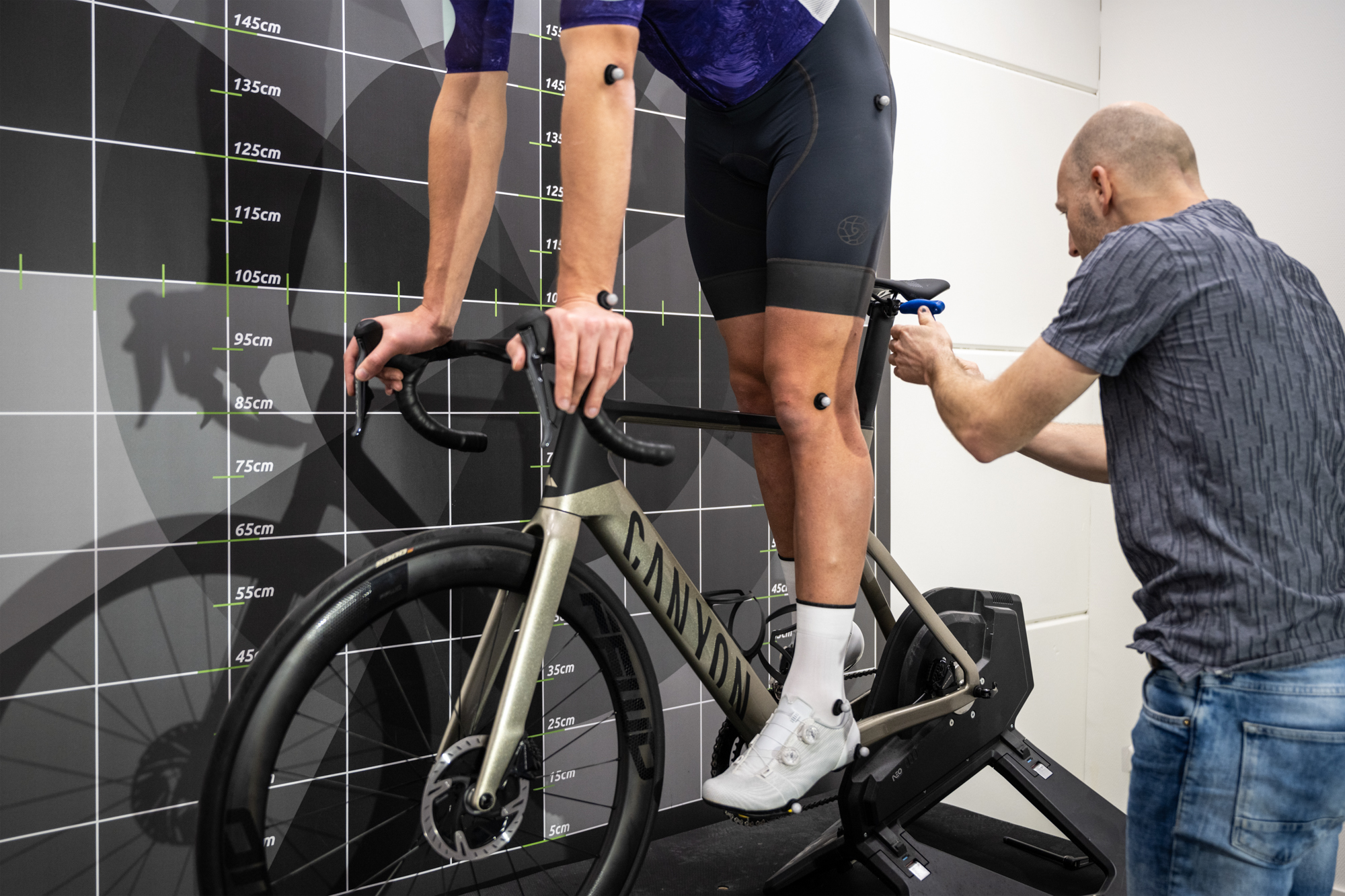

Measuring power
Over to the watts. While I'm riding on the smart trainer Eric increases the resistance. The power measurement helps Eric to see if there is a difference in power between my left and right sides. The power measurement is the next step to gain insight into how I distribute my power. This is not about the maximum power I can deliver, but it’s about getting information from the balance between my left and right pedaling movements. There may be a difference between left and right and that may explain some of the complaints or injuries. Together with the information from the saddle pressure measurement, the power measurement provides insight into my (dis)balance. Eric is now able to fine-tune my posture and bike settings.
Fine tuning and bike adjustments
Now it's time to go from a rough setting to the perfect setting by fine-tuning. Eric will check my position on the bike again to optimize my posture, balance, and power transmission. We adjust the height of the handlebars, position of the brake levers, and the height and position of the saddle until we've found the optimal settings. Then he will analyze my movements on the bike again and will show me the before and after on-screen. The video is showing the change in riding position before and after an bike fit appointment. Small but important adjustments are made. A bike fit is most accurate when knowledge is combined with the best data-driven technology, thus it matters both who does the fitting and what system they use. Going to someone who's a qualified bike fitter, knows how the body works, how the system is interconnected and also rides bikes themselves are important factors.
![]()
![]()
![]()
Custom insoles
I think the main reason for taking cycling insoles is to reduce and prevent injuries. Your feet are the foundation of your entire posture. If something is skewed there, it extends throughout your body, causing compensation, misalignment, and ultimately (an) injury(s). In addition, custom cycling insoles improve your performance on the bike, prevent energy loss, and ensure optimal transmission to your pedal. Because a custom cycling insole has to solve a problem or needs to improve your performance, it is preceded by extensive research. As I already underwent the physical examination performed by Eric and Yannick, there was no need to do it again, the information coming from this examination will be used for making and fitting the custom insoles.
After the physical examination, the making of the sole starts immediately. With directions from Yannick (ProFysic), I have to stand in a foam impression box for the fitting of the insole. I have to place my foot onto the box with both my heel and the front of my foot level in the box and apply weight to the foot to let it slowly settle into the foam. Yannick then presses my foot a bit more in certain places, based on the findings from the physical examination.
![]()
![]()
Two weeks later I was able to pick up my custom insoles. Yannick checks if the insole was successfully made: does it fit nicely in my cycling shoe, does it need some trimming and modification, and does it tackle the problem? After a couple of rides and tests, I went back to Yannick (Profysic) for a follow-up appointment to examine the mobility of my foot/ankle and the fit of the insoles. For me it felt like the insole's arch height was too high for my feet, it felt like there's a golf ball underneath my feet or the insole was digging into my arch. After heating the insoles with a head-gun, Yannick manually adjusted the insoles to the correct fit. Good to know; the custom cycling insole is made of a carbon base, completely tailor-made to your feet and cycling shoes. The carbon itself already has the shaped foot so a lot of extra padding isn't necessary. On top of the carbon layer there are intermediate layers that push your foot into the right position even further, plus a final top layer. The top layer is available in multiple designs which you can choose from, an extra fun factor to make it even more custom.
![]()
![]()
![]()
Conclusion
Now that I have done multiple rides in my new position and with the custom insoles, I'm very surprised about the difference. The adjustments Eric has made have not even been that extreme and yet I feel more comfortable on the bike. Besides that it feels better, I can also transfer more power (I put out slightly higher wattages) than I did before. As part of the new insoles, it was something I had to get used to, resulting in discomfort in the knee. Yannick told me it was completely normal, my body needed time to adjust itself to the new position on the bike. He was right, after a couple of rides, the discomfort was all gone.
The lower back pain is something I have to work on, weakness in the core muscles is actually the most common cause of lower back pain. This means I have to start doing core excises again and yoga won't be a bad thing either. Setting the saddle height higher in combination with the custom carbon insoles helped to relieve the pressure on the outside of my right foot and I was able to have a more natural rotation while pedaling.
So does a bike fitting really matter? If you plan on riding your bike a decent amount of time then it is definitely worth doing a bike fit. If you don’t sit correctly on your bike you might end up getting injured and spending a lot more money on physios than on a simple bike fit. For me, the answer is: Yes, it does!
